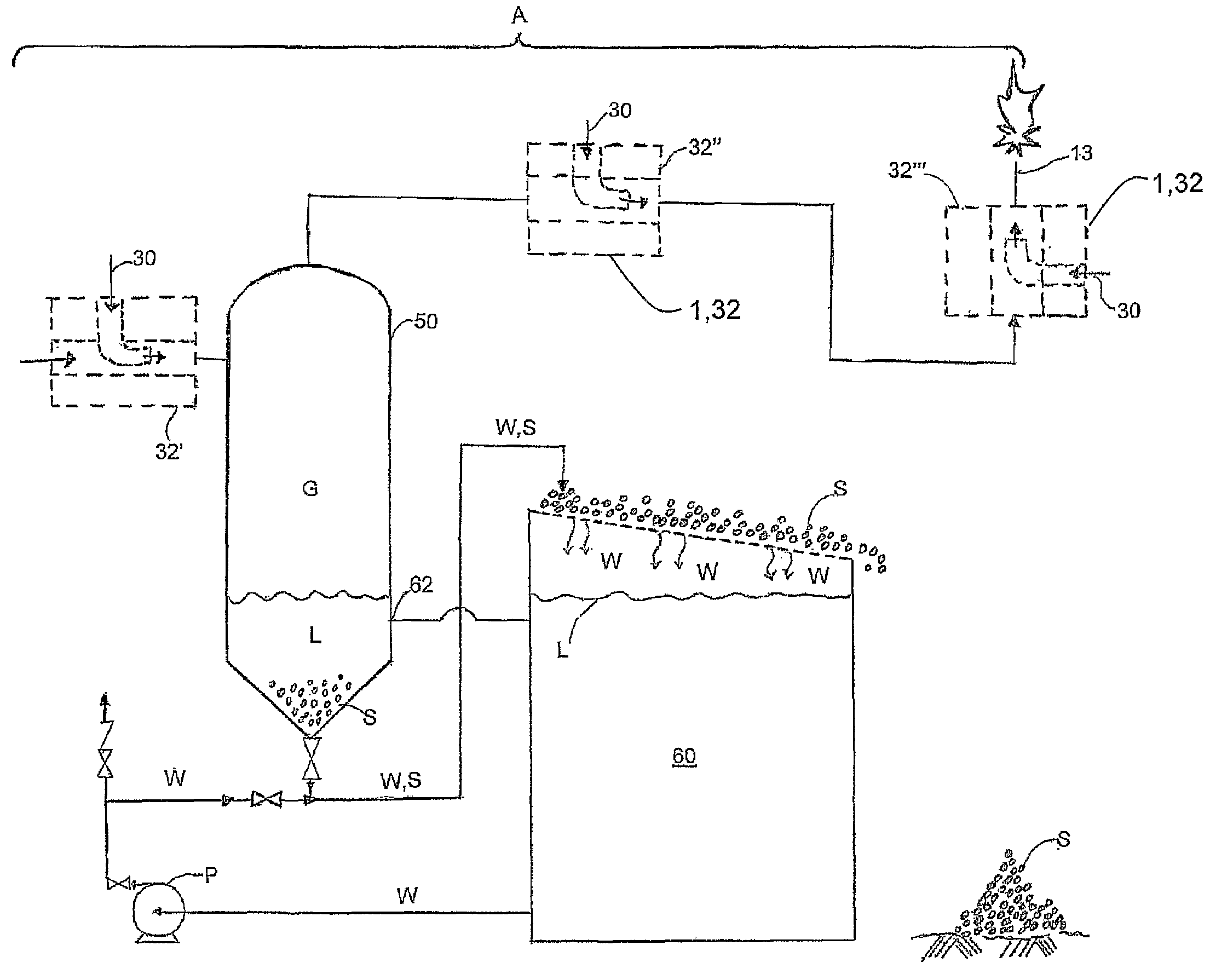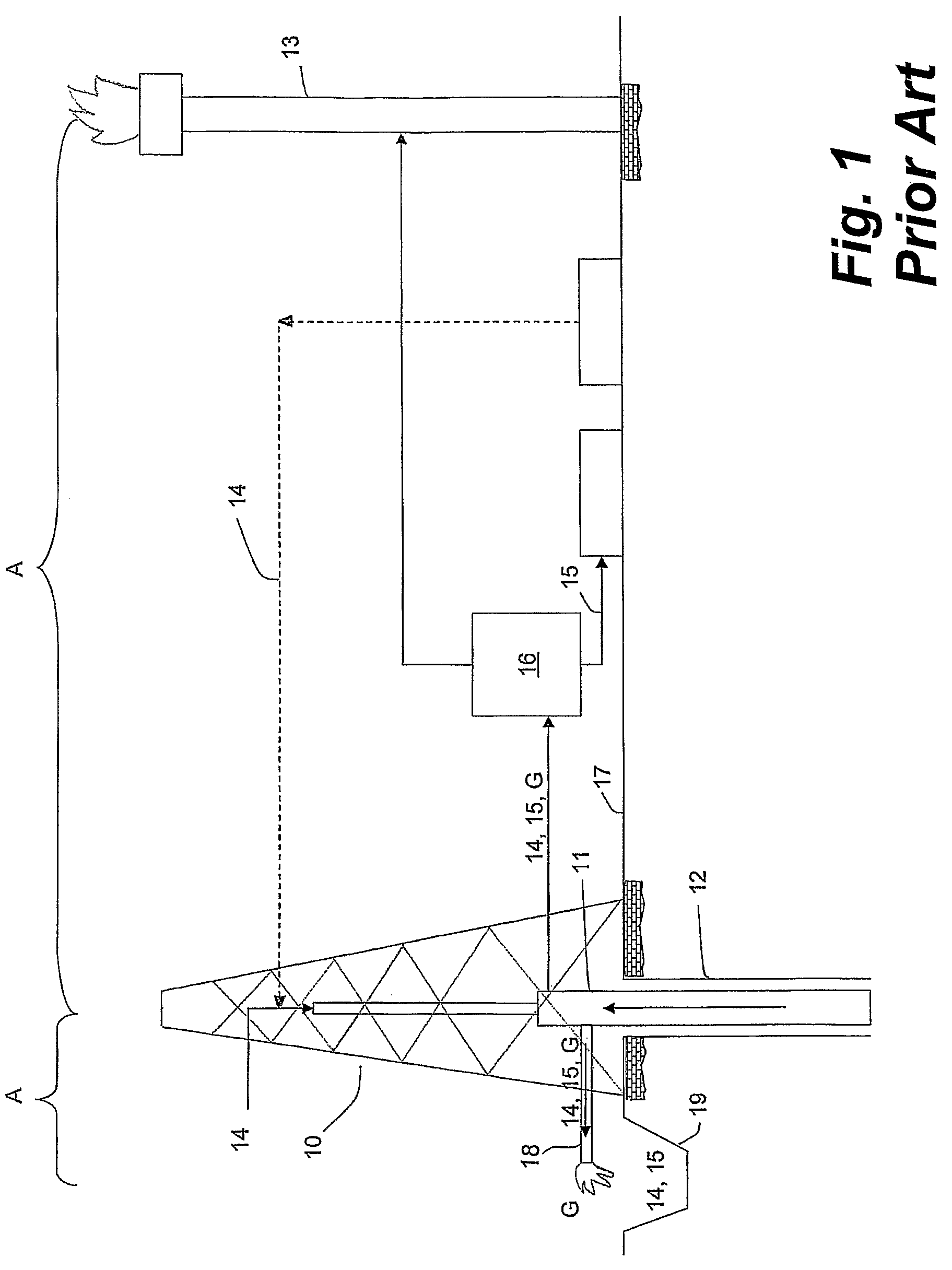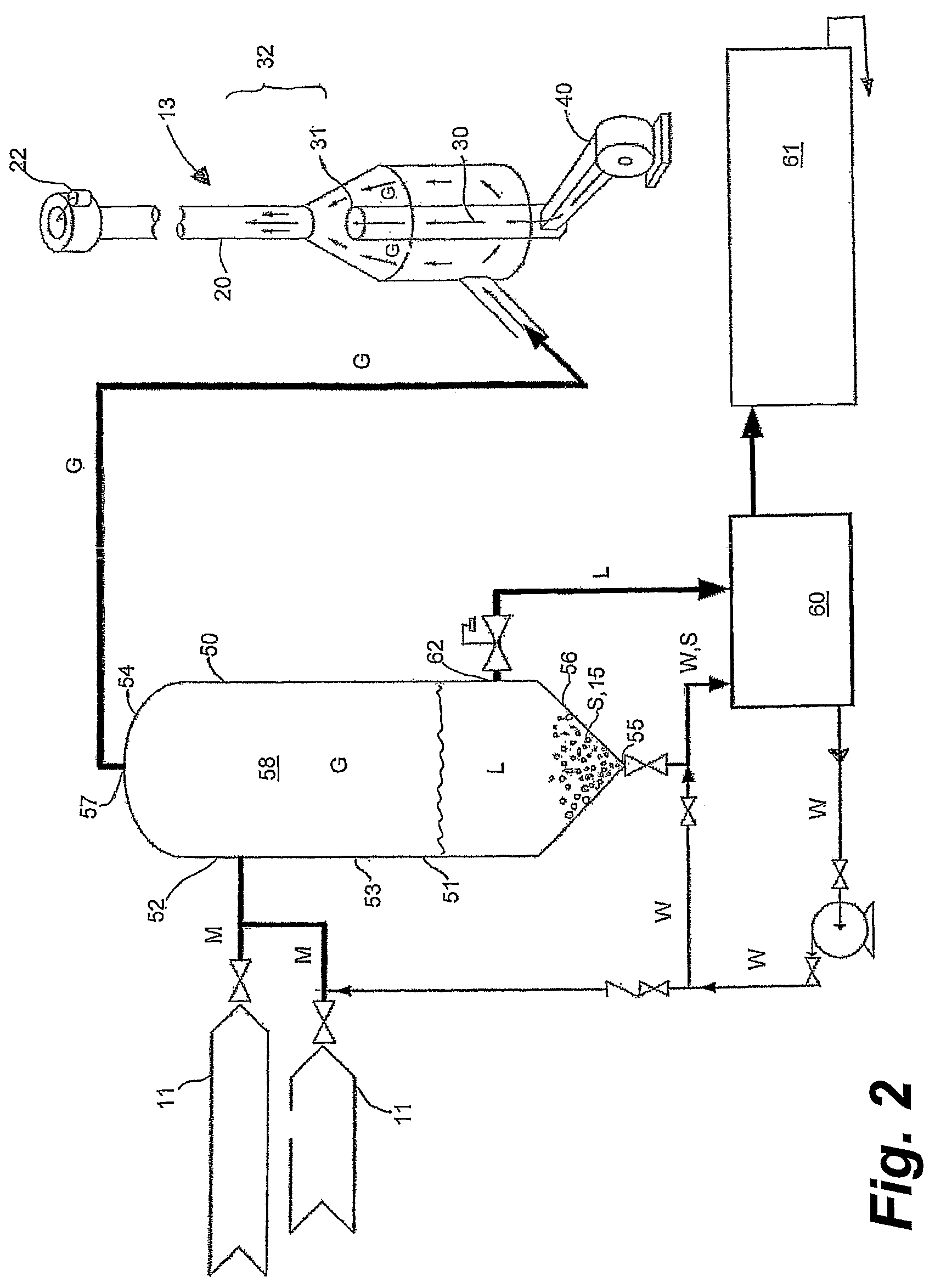Separation of evolved gases from drilling fluids in a drilling operation
a drilling fluid and evolved gas technology, applied in the direction of lighting and heating apparatus, combustion types, borehole/well accessories, etc., can solve the problems of combustible gas release, the risk of backflash, and the possibility of backflash, so as to minimize the risk of drilling interruptions
- Summary
- Abstract
- Description
- Claims
- Application Information
AI Technical Summary
Benefits of technology
Problems solved by technology
Method used
Image
Examples
Embodiment Construction
[0030]With reference to FIG. 1, a conventional drilling system comprises a drilling rig 10, a wellhead 11, wellbore 12 and a flare 13. Drilling fluids 14 are injected into the wellbore 12 to aid in extraction of cuttings 15 with the drilling fluids 14 from the wellbore 12. Suitable drilling fluids 14 include air, mist, foam or aerated mud or non-compressible liquid drilling fluids. The cuttings 15 are separated 16 from the drilling fluids 14 at surface 17. In the case where aerated mud or non-compressible mud is, the drilling fluid 14 is typically re-circulated to the wellbore 12, following separation of the cuttings 15, such as at a shale shaker 16. In air, mist or foam drilling, air is used to extract cuttings from the wellbore 12, in place of drilling mud. The cuttings 15 may be lifted as dust or mist should there be an influx of water into the wellbore 12. Further, agents may be added to the wellbore 12 during drilling to create a foam to aid in lifting the cuttings 15. Drilling...
PUM
 Login to View More
Login to View More Abstract
Description
Claims
Application Information
 Login to View More
Login to View More - R&D
- Intellectual Property
- Life Sciences
- Materials
- Tech Scout
- Unparalleled Data Quality
- Higher Quality Content
- 60% Fewer Hallucinations
Browse by: Latest US Patents, China's latest patents, Technical Efficacy Thesaurus, Application Domain, Technology Topic, Popular Technical Reports.
© 2025 PatSnap. All rights reserved.Legal|Privacy policy|Modern Slavery Act Transparency Statement|Sitemap|About US| Contact US: help@patsnap.com



